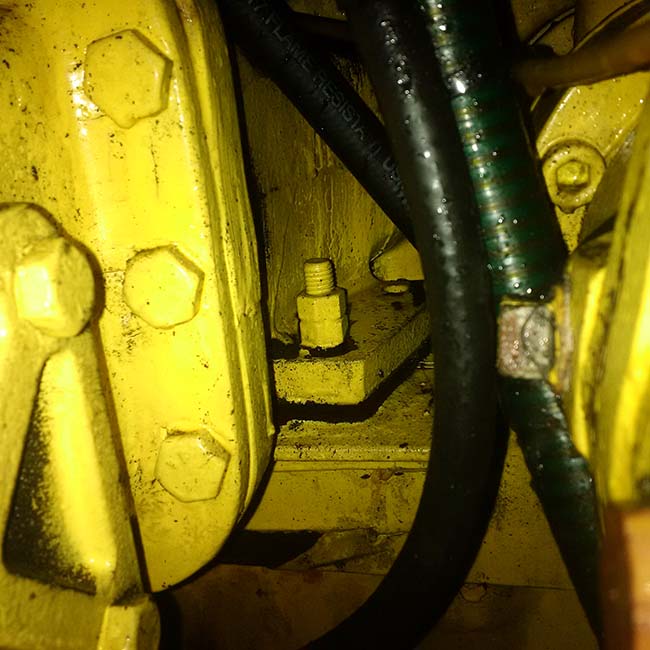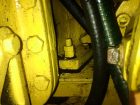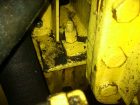
Equipment
Truck Tech: November 2016
Corrosion. Wait, don’t turn the page. This column is not about the rust and corrosion that I have written about in past columns: you know, the stuff that attaches to every square inch of fire trucks. This column is about the rust and corrosion that is so obvious it tends to get overlooked.
November 2, 2016
By Chris Dennis
 don’t turn the page.
don’t turn the page.During routine maintenance or annual safety inspections, we depend on our apparatus-repair technicians and emergency-vehicle technicians to find hidden, monstrous areas of rust long before things go badly. But we often overlook rust collecting on the frame of the truck. I have mentioned in pervious columns how important it is to wash the apparatus, not only after a fire call but also after a bad winter and spring. Corrosive salts become lodged in crevices and react with the metals again and again, every time the truck gets wet.
■ Paint
Paint on truck bodies and custom apparatus cabs always shows signs of premature erosion. Paint will swell, peel and bubble around glass, handles, wheel wells, add-on lighting, or anything that bolts to the cab body. Premature rusting is more noticeable on custom cabs than it is on commercial truck bodies because the automotive and commercial truck makers have for years known the correct way to prep, prime and paint the aluminum.
Any truck that has been subjected to cold weather and poor road de-icing methods will start to show bubbling paint after a year or two. Truck add-ons such as lighting, door handles, cab grab-handles, windshields, side-glass, steps – anything that is bolted onto the body – once they are painted, put undue stress on the areas they are pressing against. Manufacturers attach every bolt-on item prior to painting a truck, and all thread holes are threaded or prepared for self-tapping hardware. These items are all put back on once the truck is painted. In some cases pre-drilled holes are even protected prior to painting so that they don’t fill with paint and primer. I am no painter, just a mechanic who has painted a few cars and trucks in my day, but I know that whenever the screws go back in the holes, paint cracks as the item is tightened; these cracks are not seen because they are behind the mounted products. Manufacturers may or may not cover damage in these areas, even if they are still under warranty, if it is considered a maintenance issue.
My advice is keep detailed records. Smartphones are an easy way to photo document and keep track of the point at which issues arise. Contact your dealer or the body builder directly to get a claim started early. The odds are at the end of the warranty period a truck will require a complete paint job. Custom builders typically offer paint and body warranties of between five and seven years, although some now offer lifetime warranties (read all the fine print). If the apparatus is 12 to 15 years old it will most likely need paint and body repairs. Depending on the warranty, the builder will cover a portion of the cost of the paint and body; you pay the difference.
■ Frame rails
When I worked at a Mack factory branch in the ’80s, I was shown how to weld correctly. This is something every mechanic learns to do in Ontario to get a mechanic’s license; it is not a certification in welding but a step-by-step guide to the welding process. Part of my job was to lengthen and shorten frames to replace frames in one piece, or sub sections. If you come across what you think is a possible frame issue, you must deal with it. Original equipment manufacturers for both custom and commercial trucks usually offer lifetime warranties on frames.
When the build sheets and proposals say lifetime warranty for the frame, it’s easy to skip over it, but, as with the paint warranty, ask questions and read the fine print. I know a few departments that are dealing with badly corroded frames and cross members and are taking trucks out of service (see photo 1). A fire chief cannot go to council and say, “Hey, our 2000 and 2002 fire trucks need new frame rails because you folks continue to allow de-icing agents to be put on the roads.”
Fixing the frame of an aerial will cost about $100,000 and it will be out of service for approximately six months (mainly because nobody knows how to or wants to be liable after they fix it). In these situations I am talking only about custom chassis because I have yet to see a commercial chassis – ladder, pumper or a quint – with frame flex issues.
When I wrote this I was working on a 2000 custom fire truck chassis with a lifetime warranty. The truck came in for regular maintenance with a water leak at the fire pump. The water leak required the technician to remove the officer’s side of the truck mid-ship mounted fire-pump panel to see the leak (see photo 2). Once inside, the technician noticed a piece of cast from the fire pump was cracked: the bolted area of the steamer extension for the master intake. The piece of cast was small, with a 1/2-inch coarse bolt still stuck in the cast ear, which had snapped off. Upon inspection we were able to see clearly that the mounting flange to which the fore pump is bolted – the flange then bolts to the side flat face of the frame rail – was raised approximately 3/8 of an inch off the flat flange surface of the top of the frame rail. A third party was invited to conduct a magnetic test on thickness and metal material to see how bad the problem was and to suggest some solutions. The fire chief was immediately notified as was the deputy in charge of apparatus division. The techs recommended we remove the rig from service.
The tandem fire truck is more than 32 feet long, with a torque box, full fire pump, steel ladder, an aluminum body and roll up doors. The frame was separating between the inner frame rail and the outer frame rail C channels. The frame was pushing up on the fire pump mount and eventually broke off a cast piece of the fire pump (see photo 3).
All single, double or triple frames are made so that when the truck turns full right or left it actually twists and moves forward approximately 1/2 to 3/4 of an inch. It is amazing how frames can handle both the yield load and the compression load and not break. The frame metals are pretty darn strong to handle the weight and pounding they go through. There is a lot of load ahead of the first drive axle and behind the cab where the fire pump sits or, for a mid-mount aerial or platform where the turntable sits.
You would think that with rust proofing and continuous maintenance on fire trucks, rusting of the frame would not happen. In the case of the broken tandem truck, the chassis builder is already saying it was not rust proofed correctly and it was overloaded. But a frame rail really should not be bad already in its life. If we are the only department with this problem I would possibly agree, but we are not. Fire chiefs all over Canada are dealing with frame issues. Trucks are being taken out of service because the budget doesn’t have an extra $100,000 to get it fixed. Yet when the public needs the fire pump to come to their aid, they expect it to be there and in perfect working order.
For our broken tandem, I exposed the side of the frame rail that requires repair or replacement and disassembled the fire pump and frame rail mount to have a clear view of the area. I’ve power washed and degreased the entire pump house module and frame rail and fire-pump mount assemblies. I contacted a structural engineer – somebody who knows about the ins and out of sub structure metal and supporting member. The engineer said he was surprised to see how the frame rails spread apart despite all of the items tying them together. He suggested we clear the area around the frame rails for full visual inspection. Once he saw the rails, he determined that there could be a repair without a full frame replacement. The repair had to be done to a strict standard and by a company that specializes in frame rails. This company would need to be inspected by the engineer to be sure they have the means and knowledge to do the job.
Once I found a company, I instructed the company of what the engineer wants (apparently that is the way they repair all frame rails). I asked the company about the likelihood the frame would break or twist again after the repair. The answer is easy: if the repair is done the right way the first time, the only thing the fire department needs to do is inspect the frame rail more often. Inspecting the frame rails includes training firefighter where and what to look for. This is great news.
I have been a licensed heavy truck and coach mechanic for more than 35 years, working at small truck shops, public transit repair companies, truck-trailer repair shops, and factory branches. I have fixed a few things well and some not so well, but the one thing I did do well was pay attention: if I did something wrong once and I had the opportunity to make it right, I learned from the mistake. Ask lots of questions and ask to be shown.
I will go into detail about how the frame is repaired in my next column. Remember my friends, rubber side down!
Chris Dennis is the chief mechanical officer for Vaughan Fire & Rescue Service in Ontario. He can be reached at Chris.Dennis@vaughan.ca
Print this page

